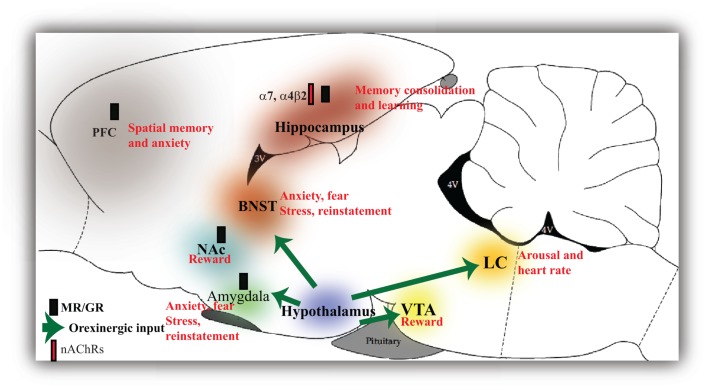Figure 2.
Glucocorticoid, orexinergic, and cholinergic activation of the brain regions involved in stress and drug addiction. Glucocorticoid receptors in the hippocampus and amygdala mediate the effects of stress and consolidation of fearful memories. GCs also modulate alcohol withdrawal in the prefrontal cortex (PFC), nucleus accumbens (NAc), and bed nucleus of the stria terminalis (BNST). Glucocorticoids (GCs) in the hippocampus also negatively regulate the hypothalamus thereby providing a central feedback mechanism. Orexins produced in the hypothalamus activate reward pathways such as the ventral tegmental area (VTA) and the NAc and brain regions involved in stress, fear, and anxiety such as the amygdala and BNST and regulate cardiovascular tone through the locus coeruleus (LC). Both GCs and orexins play similar roles in brain regions implicated in stress and reward. Glucocorticoids have been shown to directly inhibit nicotinic receptor (nAChR) activity in the hippocampus that exert an inhibitory effect on the HPA axis. The nAChRs seem to differentially orchestrate responses to stress.

